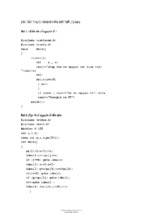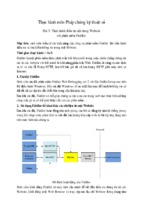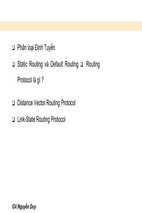This book is dedicated to OpenNA staff. Thanks, guys (no-gender)!!
--Gerhard Mourani
This book is printed on acid-free paper with 85% recycled content, 15% post-consumer waste.
Open Network Architecture is commited to using paper with the highest recycled content
available consistent with high quality.
Copyright © 2002 by Gerhard Mourani and Open Network Architecture, Inc.
All rights reserved. No part of this publication may be reproduced, stored in a retrieval system or
transmitted in any form or by any means, electronic, mechanical, photocopying, recording,
scanning or otherwise, except as permitted by Canada Copyright Act, without either the prior
written permission of the Publisher, or authorization through payment of the appropriate per-copy
fee to the copyright holders Gerhard Mourani and Open Network Architecture, Inc. 11090
Drouart, Montreal, PQ H3M 2S3, (514) 978-6183, fax (514) 333-0236. Requests to the Publisher
for permission should be addressed to the Publishing Manager, at Open Network Architecture,
Inc., E-mail:
[email protected]
This publication is designed to provide accurate and authoritative information in regard to the
subject matter covered. It is sold with the understanding that some grammatical mistakes could
have occurred but this won’t jeopardize the content or the issue raised herewith.
Title: Securing and Optimizing Linux: The Hacking Solution
Page Count: 1208
Version: 3.0
Last Revised: 2002-06-26
Publisher: Open Network Architecture, Inc.
Editor: Ted Nackad
Text Design & Drawings (Graphics): Bruno Mourani
Printing History: June 2000: First Publication.
Author's: Gerhard Mourani
Mail:
[email protected]
Website: http://www.openna.com/
National Library Act. R.S., c. N-11, s. 1.
Legal Deposit, 2002
Securing and Optimizing Linux: The Hacking Solution / Open Network Architecture, Inc.
Published by Open Network Architecture, Inc., 11090 Drouart, Montreal, H3M 2S3, Canada.
Includes Index.
ISBN 0-9688793-1-4
Printed in Canada
1
Overview
Part I
Installation Security
Chapter 1
Chapter 2
Part II
Introduction
Installation Issues
System Security & Optimization
Chapter 3
Chapter 4
Chapter 5
Chapter 6
Chapter 7
General Security
Pluggable Authentication Modules
General Optimization
Kernel Security & Optimization
Process File System Management
Part III Network Security
Chapter 8
Chapter 9
Chapter 10
Chapter 11
Chapter 12
Chapter 13
TCP/IP Network Management
Firewall Basic Concept
GIPTables Firewall
Squid Proxy Server
SquidGuard Filter
FreeS/WAN VPN
Part IV Cryptography & Authentication
Chapter 14
Chapter 15
Chapter 16
Chapter 17
Part V
GnuPG
OpenSSL
OpenSSH
Sudo
Monitoring & System Integrity
Chapter 18
Chapter 19
Chapter 20
Chapter 21
Chapter 22
Chapter 23
sXid
LogSentry
HostSentry
PortSentry
Snort
Tripwire
Part VI Super-Server
Chapter 24
Chapter 25
UCSPI-TCP
Xinetd
Part VII Management & Limitation
Chapter 26
Chapter 27
NTP
Quota
Part VIII Domain Name System & Dynamic Host Protocol
Chapter 28
Chapter 29
ISC BIND & DNS
ISC DHCP
Part IX Mail Transfer Agent Protocol
Chapter 30
Chapter 31
2
Exim
Qmail
Part X
Internet Message Access Protocol
Chapter 32
Chapter 33
Chapter 34
Part XI
Chapter 35
Chapter 36
Chapter 37
tpop3d
UW IMAP
Qpopper
Anti-Spam & Anti-Virus
SpamAssassin
Sophos
AMaViS
Part XII Database Server
Chapter 38
Chapter 39
Chapter 40
MySQL
PostgreSQL
OpenLDAP
Part XIII File Transfer Protocol
Chapter 41
Chapter 42
ProFTPD
vsFTPD
Part XIV Hypertext Transfer Protocol
Chapter 43
Chapter 44
Chapter 45
Apache
PHP
Mod_Perl
Part XV NetBios Protocol
Chapter 46
Samba
Part XVI Backup
Chapter 47
Tar & Dump
Part XVII Appendixes
Appendix A
Tweaks, Tips and Administration Tasks
Appendix B
Port list
3
Contents
Steps of installation
Author note
Audience
These installation instructions assume
Obtaining the example configuration files
Problem with Securing & Optimizing Linux
Acknowledgments
Introduction
13
13
14
15
15
15
15
19
What is Linux?
Some good reasons to use Linux
Let's dispel some of the fear, uncertainty, and doubt about Linux
Why choose pristine source?
Compiling software on your system
Build & install software on your system
Editing files with the vi editor tool
Recommended software to include in each type of servers
Installation Issues
21
21
21
22
22
23
24
25
29
Know your Hardware!
Creating the Linux Boot Disk
Beginning the installation of Linux
Installation Class and Method (Install Options)
Partition your system for Linux
Disk Partition (Manual Partitioning)
Selecting Package Groups
Boot Disk Creation
How to use RPM Commands
Starting and stopping daemon services
Software that must be uninstalled after installation of the server
Remove unnecessary documentation files
Remove unnecessary/empty files and directories
Software that must be installed after installation of the server
31
31
33
34
35
39
50
53
53
56
57
65
66
66
General Security 73
BIOS
Unplug your server from the network
Security as a policy
Choose a right password
The root account
Set login time out for the root account
Shell logging
The single-user login mode of Linux
Disabling Ctrl-Alt-Delete keyboard shutdown command
Limiting the default number of started ttys on the server
The LILO and /etc/lilo.conf file
The GRUB and /boot/grub/grub.conf file
The /etc/services file
4
75
75
76
76
77
77
78
79
79
80
80
82
84
The /etc/securetty file
Special accounts
Control mounting a file system
Mounting the /usr directory of Linux as read-only
Tighten scripts under /etc/init.d
Tighten scripts under /etc/cron.daily/
Bits from root-owned programs
Don’t let internal machines tell the server what their MAC address is
Unusual or hidden files
Finding Group and World Writable files and directories
Unowned files
Finding .rhosts files
Physical hard copies of all-important logs
Getting some more security by removing manual pages
System is compromised!
Pluggable Authentication Modules
101
The password length
Disabling console program access
Disabling all console access
The Login access control table
Tighten console permissions for privileged users
Putting limits on resource
Controlling access time to services
Blocking; su to root, by one and sundry
Using sudo instead of su for logging as super-user
General Optimization
85
85
88
89
91
91
91
93
94
95
96
96
97
99
100
103
105
105
106
107
109
111
112
113
116
Static vs. shared libraries
The Glibc 2.2 library of Linux
Why Linux programs are distributed as source
Some misunderstanding in the compiler flags options
The gcc specs file
Striping all binaries and libraries files
Tuning IDE Hard Disk Performance
Kernel Security & Optimization
118
119
120
121
122
127
128
133
Difference between a Modularized Kernel and a Monolithic Kernel
Making an emergency boot floppy
Preparing the Kernel for the installation
Applying the Grsecurity kernel patch
Obtaining and Installing Grsecurity
Tuning the Kernel
Cleaning up the Kernel
Configuring the Kernel
Compiling the Kernel
Installing the Kernel
Verifying or upgrading your boot loader
Reconfiguring /etc/modules.conf file
Rebooting your system to load the new kernel
Delete programs, edit files pertaining to modules
135
138
139
141
141
142
143
145
190
190
192
194
195
195
5
Making a new rescue floppy for Modularized Kernel
Making a emergency boot floppy disk for Monolithic Kernel
Process file system management
199
What is sysctl?
/proc/sys/vm: The virtual memory subsystem of Linux
/proc/sys/fs: The file system data of Linux
/proc/sys/net/ipv4: IPV4 settings of Linux
Other possible optimization of the system
TCP/IP Network Management
196
196
202
202
209
211
219
225
TCP/IP security problem overview
Installing more than one Ethernet Card per Machine
Files-Networking Functionality
Testing TCP/IP Networking
The last checkup
228
232
233
237
240
Firewall Basic Concept 241
What is the IANA?
The ports numbers
What is a Firewall?
Packet Filter vs. Application Gateway
What is a Network Firewall Security Policy?
The Demilitarized Zone
Linux IPTables Firewall Packet Filter
The Netfilter Architecture
243
243
245
245
247
248
249
249
GIPTables Firewall 255
Building a kernel with IPTables support
Compiling - Optimizing & Installing GIPTables
Configuring GIPTables
/etc/giptables.conf: The GIPTables Configuration File
/etc/rc.d/rc.giptables.blocked: The GIPTables Blocked File
/etc/init.d/giptables: The GIPTables Initialization File
The GIPTables Firewall Module Files
How GIPTables parameters work?
Running the type of GIPTables firewall that you need
The GIPTables configuration file for a Gateway/Proxy Server
GIPTables-Firewall Administrative Tools
259
262
263
263
274
275
276
277
283
284
302
Squid Proxy Server 305
Compiling - Optimizing & Installing Squid
Configuring Squid
Running Squid with Users Authentication Support
Securing Squid
Optimizing Squid
Squid Administrative Tools
The cachemgr.cgi program utility of Squid
6
309
313
326
330
333
333
335
SquidGuard Filter 337
Compiling - Optimizing & Installing SquidGuard
Configuring SquidGuard
Testing SquidGuard
Optimizing SquidGuard
340
342
350
351
FreeS/WAN VPN 355
Compiling - Optimizing & Installing FreeS/WAN
Configuring FreeS/WAN
Configuring RSA private keys secrets
Requiring network setup for IPSec
Testing the FreeS/WAN installation
GnuPG
379
Compiling - Optimizing & Installing GnuPG
Using GnuPG under Linux terminal
OpenSSL
440
442
444
447
447
451
Compiling - Optimizing & Installing sXid
Configuring sXid
sXid Administrative Tools
LogSentry
414
417
427
432
434
437
Compiling - Optimizing & Installing Sudo
Configuring Sudo
A more complex sudoers configuration file
Securing Sudo
Sudo Users Tools
sXid
396
398
404
409
411
Compiling - Optimizing & Installing OpenSSH
Configuring OpenSSH
Running OpenSSH in a chroot jail
Creating OpenSSH private & public keys
OpenSSH Users Tools
Sudo
382
384
391
Compiling - Optimizing & Installing OpenSSL
Configuring OpenSSL
OpenSSL Administrative Tools
Securing OpenSSL
OpenSSH
360
363
367
372
374
454
455
457
459
7
Compiling - Optimizing & Installing LogSentry
Configuring LogSentry
HostSentry
467
Compiling - Optimizing & Installing HostSentry
Configuring HostSentry
PortSentry
564
566
566
572
574
578
581
Build a kernel with Quota support enable
Compiling - Optimizing & Installing Quota
8
544
546
547
559
Compiling - Optimizing & Installing NTP
Configuring NTP
Running NTP in Client Mode
Running NTP in Server Mode
Running NTP in a chroot jail
NTP Administrative Tools
Quota
536
538
541
Compiling - Optimizing & Installing Xinetd
Configuring Xinetd
The /etc/xinetd.d directory
NTP
514
517
526
528
528
533
Compiling - Optimizing & Installing ucsip-tcp
Using ucsip-tcp
Xinetd
499
501
507
511
Compiling - Optimizing & Installing Tripwire
Configuring Tripwire
Running Tripwire for the first time
Securing Tripwire
Tripwire Administrative Tools
ucspi-tcp
484
487
494
495
Compiling - Optimizing & Installing Snort
Configuring Snort
Running Snort in a chroot jail
Tripwire
470
474
481
Compiling - Optimizing & Installing PortSentry
Configuring PortSentry
Removing hosts that have been blocked by PortSentry
Snort
462
466
584
584
Modifying the /etc/fstab file
Creating the aquota.user and aquota.group files
Assigning Quota for Users and Groups
Quota Administrative Tools
586
587
587
590
ISC BIND & DNS 593
Compiling - Optimizing & Installing ISC BIND & DNS
Configuring ISC BIND & DNS
Running ISC BIND & DNS as Caching-Only Name Server
Running ISC BIND & DNS as Primary Master Name Server
Running ISC BIND & DNS as Secondary Slave Name Server
Running ISC BIND & DNS in a chroot jail
Securing ISC BIND & DNS
Optimizing ISC BIND & DNS
ISC BIND & DNS Administrative Tools
ISC BIND & DNS Users Tools
ISC DHCP
645
Building a kernel with ISC DHCP support
Compiling - Optimizing & Installing ISC DHCP
Configuring ISC DHCP
Testing the DHCP server
Running ISC DHCP in a chroot jail
Securing ISC DHCP
Running the DHCP client for Linux
Exim
649
650
654
662
664
675
676
683
Compiling - Optimizing & Installing Exim
Configuring Exim
Testing Exim
Allowing Users to authenticate with Exim before relaying
Running Exim with SSL support
Running Exim with Virtual Hosts support
Running Exim with Maildir support
Running Exim with mail quota support
Running Exim as a Null Client Mail Server
Exim Administrative Tools
Qmail
598
600
601
610
615
617
621
638
641
643
688
693
716
719
722
729
732
734
735
738
741
Compiling, Optimizing & Installing Qmail
Configuring Qmail
Testing Qmail
Allowing Users to authenticate with Qmail before relaying
Running Qmail with SSL support
Running Qmail with Virtual Hosts support
Running Qmail as a Null Client Mail Server
Running Qmail as a Mini-Qmail Mail Server
Running qmail-pop3d with SSL support
745
751
755
756
760
765
769
773
777
9
Qmail Administrative Tools
Qmail Users Tools
tpop3d
785
Compiling - Optimizing & Installing tpop3d
Configuring tpop3d
Securing tpop3d
UW IMAP
860
872
875
877
878
881
Compiling - Optimizing & Installing MySQL
Configuring MySQL
Securing MySQL
10
853
854
855
857
Verifying & installing all the additional prerequisites to run AMaViS
Compiling - Optimizing & Installing AMaViS
Running AMaViS with Exim
Running AMaViS with Qmail
Testing AMaViS
MySQL
839
840
842
843
844
849
Compiling & Installing Sophos
Configuring Sophos
Testing Sophos
AMaViS
819
821
825
827
835
Compiling - Optimizing & Installing SpamAssassin
Configuring SpamAssassin
Testing SpamAssassin
Running SpamAssassin with Exim
Running SpamAssassin with Qmail
Sophos
801
805
807
808
810
811
815
Compiling - Optimizing & Installing Qpopper
Configuring Qpopper
Securing Qpopper
Running Qpopper with SSL support
SpamAssassin
790
791
795
797
Compiling - Optimizing & Installing UW IMAP
Configuring UW IMAP
Enable IMAP or POP services via UCSPI-TCP
Enable IMAP or POP services via Xinetd
Securing UW IMAP
Running UW IMAP with SSL support
Qpopper
780
781
886
888
893
Optimizing MySQL
MySQL Administrative Tools
PostgreSQL
907
Compiling - Optimizing & Installing PostgreSQL
Configuring PostgreSQL
Running PostgreSQL with SSL support
Securing PostgreSQL
Optimizing PostgreSQL
PostgreSQL Administrative Tools
OpenLDAP
976
980
992
993
997
1000
1005
1006
1009
Compiling - Optimizing & Installing vsFTPd
Configuring vsFTPd
Creating an account for FTP client to connect to the FTP server
Setup an anonymous FTP server
Allow anonymous users to upload to the FTP server
Apache
940
945
950
954
961
962
963
967
971
Compiling - Optimizing & Installing ProFTPD
Configuring ProFTPD
Creating an account for FTP client to connect to the FTP server
Setup an anonymous FTP server
Allow anonymous users to upload to the FTP server
Running ProFTPD with SSL support
Securing ProFTPD
ProFTPD Administrative Tools
vsFTPd
910
913
918
924
928
929
935
Compiling - Optimizing & Installing OpenLDAP
Configuring OpenLDAP
Running OpenLDAP with TLS/SSL support
Running OpenLDAP in a chroot jail
Securing OpenLDAP
Optimizing OpenLDAP
OpenLDAP Administrative Tools
OpenLDAP Users Tools
ProFTPD
894
899
1014
1015
1021
1022
1024
1029
Compiling - Optimizing & Installing Apache
Configuring Apache
Running Apache with TLS/SSL support
Running Apache in a chroot jail
Running Apache with users authentication support
Caching frequently requested static files
Some statistics about Apache and Linux
1034
1040
1051
1055
1063
1065
1066
11
PHP
1069
Compiling - Optimizing & Installing PHP
Configuring PHP
Running PHP in a chroot jail
Running PHP with the PHP Accelerator program
Mod_Perl
1089
Compiling - Optimizing & Installing Mod_Perl
Configuring Mod_Perl
Running Mod_Perl in a chroot jail
Samba
1104
1106
1116
1121
1123
1125
1126
1129
The tar backup program
Making backups with tar
Automating tasks of backups made with tar
Restoring files with tar
The dump backup program
Making backups with dump
Restoring files with dump
Backing up and restoring over the network
APPENDIX A
1151
APPENDIX B
1157
12
1093
1094
1095
1099
Compiling - Optimizing & Installing Samba
Configuring Samba
Running Samba with TLS/SSL support
Securing Samba
Optimizing Samba
Samba Administrative Tools
Samba Users Tools
Tar & Dump
1073
1076
1084
1085
1131
1132
1134
1136
1138
1139
1141
1143
Preface
Steps of installation
Depending of your level of knowledge in Linux, you can read this book from the beginning
through to the end of the chapters that interest you. Each chapter and section of this book
appears in a manner that lets you read only the parts of your interest without the need to
schedule one day of reading. Too many books on the market take myriad pages to explain
something that can be explained in two lines, I’m sure that a lot of you agree with my opinion.
This book tries to be different by talking about only the essential and important information that
the readers want to know by eliminating all the nonsense.
Although you can read this book in the order you want, there is a particular order that you could
follow if something seems to be confusing you. The steps shown below are what I recommend:
Setup Linux in your computer.
Remove all the unnecessary RPM’s packages.
Install the necessary RPM’s packages for compilation of software (if needed).
Secure the system in general.
Optimize the system in general.
Reinstall, recompile and customize the Kernel to fit your specific system.
Configure firewall script according to which services will be installed in your system.
Install OpenSSL to be able to use encryption with the Linux server.
Install OpenSSH to be able to make secure remote administration tasks.
Install Sudo.
Install sXid.
Install LogSentry.
Install PortSentry.
Install Tripwire.
Install ICS BIND/DNS.
Install Exim or Qmail.
Install any software you need after to enable specific services into the server.
Author note
According to some surveys on the Internet, Linux will be the number one operating system for a
server platform in year 2003. Presently it is number two and no one at one time thought that it
would be in this second place. Many organizations, companies, universities, governments, and
the military, etc, kept quiet about it. Crackers use it as the operating system by excellence to
crack computers around the world. Why do so many people use it instead of other well know
operating systems? The answer is simple, Linux is free and the most powerful, reliable, and
secure operating system in the world, providing it is well configured. Millions of programmers,
home users, hackers, developers, etc work to develop on a voluntary basis, different programs
related to security, services, and share their work with other people to improve it without
expecting anything in return. This is the revolution of the Open Source movement that we see
and hear about so often on the Internet and in the media.
13
If crackers can use Linux to penetrate servers, security specialists can use the same means to
protect servers (to win a war, you should at least have equivalent weapons to what your enemy
may be using). When security holes are encountered, Linux is the one operating system that has
a solution and that is not by chance. Now someone may say: with all these beautiful features why
is Linux not as popular as other well know operating system? There are many reasons and
different answers on the Internet. I would just say that like everything else in life, anything that we
are to expect the most of, is more difficult to get than the average and easier to acquire. Linux
and *NIX are more difficult to learn than any other operating system. It is only for those who want
to know computers in depth and know what they doing. People prefer to use other OS’s, which
are easy to operate but hard to understand what is happening in the background since they only
have to click on a button without really knowing what their actions imply. Every UNIX operating
system like Linux will lead you unconsciously to know exactly what you are doing because if you
pursue without understanding what is happening by the decision you made, then nothing will
surely work as expected. This is why with Linux; you will know the real meaning of a computer
and especially a server environment where every decision warrants an action which will closely
impact on the security of your organization and employees.
Many Web sites are open to all sorts of "web hacking." According to the Computer Security
Institute and the FBI's joint survey, 90% of 643 computer security practitioners from government
agencies, private corporations, and universities detected cyber attacks last year. Over
$265,589,940 in financial losses was reported by 273 organizations.
Many readers of the previous version of this book told me that the book was an easy step by step
guide for newbie’s, I am flattered but I prefer to admit that it was targeting for a technical audience
and I assumed the reader had some background in Linux, UNIX systems. If this is not true in your
case, I highly recommend you to read some good books in network administration related to
UNIX and especially to Linux before venturing into this book. Remember talking about security
and optimization is a very serious endeavor. It is very important to be attentive and understand
every detail in this book and if difficulties arise, try to go back and reread the explanation will save
a lot of frustration. Once again, security is not a game and crackers await only one single error
from your part to enter your system. A castle has many doors and if just one stays open, will be
enough to let intruders into your fortress. You have been warned.
Many efforts went into the making of this book, making sure that the results were as accurate as
possible. If you find any abnormalities, inconsistent results, errors, omissions or anything else that
doesn't look right, please let me know so I can investigate the problem and/or correct the error.
Suggestions for future versions are also welcome and appreciated. A web site dedicated to this
book is available on the Internet for your convenience. If you any have problem, question,
recommendation, etc, please go to the following URL: http://www.openna.com/. We made this
site for you.
Audience
This book is intended for a technical audience and system administrators who manage Linux
servers, but it also includes material for home users and others. It discusses how to install and
setup a Linux server with all the necessary security and optimization for a high performance Linux
specific machine. It can also be applied with some minor changes to other Linux variants without
difficulty. Since we speak of optimization and security configuration, we will use a source
distribution (tar.gz) program for critical server software like Apache, ISC BIND/DNS, Samba,
Squid, OpenSSL etc. Source packages give us fast upgrades; security updates when necessary,
and better compilation, customization, and optimization options for specific machines that often
aren’t available with RPM packages.
14
Preface
These installation instructions assume
You have a CD-ROM drive on your computer and the Official Red Hat Linux or OpenNA Linux
CD-ROM. Installations were tested on the Official Red Hat Linux version 7.3 and OpenNA Linux.
You should familiarize yourself with the hardware on which the operating system will be installed.
After examining the hardware, the rest of this document guides you, step-by-step, through the
installation process.
Obtaining the example configuration files
In a true server environment and especially when Graphical User Interface is not installed, we will
often use text files, scripts, shell, etc. Throughout this book we will see shell commands, script
files, configuration files and many other actions to execute on the terminal of the server. You can
enter them manually or use the compressed archive file that I made which contains all
configuration examples and paste them directly to your terminal. This seems to be useful in many
cases to save time.
The example configuration files in this book are available electronically via HTTP from this URL:
http://www.openna.com/products/books/securing-optimizing-linux/3rdedition/index.htm
•
In either case, extract the files into your Linux server from the archive by typing:
[root@deep /]# cd /var/tmp
[root@deep tmp]# tar xzpf floppy-3.0.tgz
If you cannot get the examples from the Internet, please contact the author at this email address:
[email protected]
Problem with Securing & Optimizing Linux
When you encounter a problem in "Securing & Optimizing Linux" we want to hear about it. Your
reports are an important part in making the book more reliable, because even with the utmost
care we cannot guarantee that every part of the book will work on every platform under every
circumstance.
We cannot promise to fix every error right away. If the problem is obvious, critical, or affects a lot
of users, chances are that someone will look into it. It could also happen that we tell you to
update to a newer version to see if the problem persists there. Or we might decide that the
problem cannot be fixed until some major rewriting has been done. If you need help immediately,
consider obtaining a commercial support contract or try our Q&A archive from the mailing list for
an answer.
Below are some important links:
OpenNA web site: http://www.openna.com/
Mailing list: http://www.openna.com/support/mailing/
Support: http://www.openna.com/support/
RPM Download: http://www.openna.com/download/
Acknowledgments
I would like to thank all the OpenNA staff for their hard works and patience. A special gratitude
and many thanks to Colin Henry who made tremendous efforts to make this book grammatically
and orthographically sound in a professional manner. Adrian Pascalau for its time and help in the
open source community and all Linux users around the world who have participated by providing
good comments, ideas, recommendations and suggestions.
15
Introduction
IN THIS CHAPTER
1.
2.
3.
4.
5.
6.
7.
8.
What is Linux?
Some good reasons to use Linux
Let's dispel some of the fear, uncertainty, and doubt about Linux
Why choose Pristine source?
Compiling software on your system
Build, Install software on your system
Editing files with the vi editor tool
Recommended software to include in each type of servers
19




















